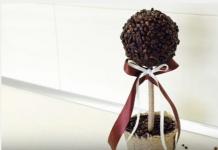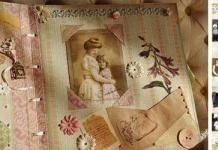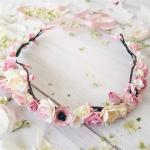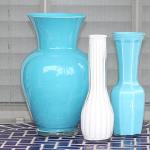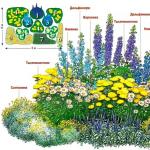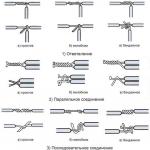Many owners of their own plots pay a lot of attention not only to the harvest, but also to the aesthetic component. Relaxing and working in the environment is much more interesting. If you do not want to spend a lot of money on, then a great solution for you is to create original flower beds and flower beds with your own hands from improvised materials. The photos on the site show a huge selection of such home-made designs. Let's see how you can make a beautiful flower garden from improvised means, and also consider the most interesting ideas and designs.
Before you start creating flower beds and flower beds in the country, you need to decide on the layout. You can create a project yourself. Here are the main tasks that you will have to solve:
- distribution and planning of landing patterns;
- selection of plants for flower beds;
- design selection.

There should not be any difficulties with choosing beautiful ones, because on the net you can find a lot of photos of simple flower beds and flower beds with your own hands. Many interesting ideas can be found in landscape design and gardening magazines.
1 of 6






Now let's figure out how a flower garden differs from a flower bed:
- the flowerbed implies compliance with the geometric lines of the territory on which the plants will be planted. Similar elements of landscape design are rectangular, round or other regular shape;

- for flower beds, the shape is not important. In this case, the design can acquire a wide variety of configurations.

To plan a flower bed, you need to know some important details:
- the right choice of color design of the flower garden. Be sure to consider their duration of flowering;
- the number of species matters. You should not plant many different varieties, it is enough to use 2-3 crops. In this case, it should be taken into account how the plants get along with each other;
- the choice of the shape of the flower bed can be peeped among those already developed by other designers. The selected configuration should not look foreign in the general garden ensemble. It should fit into the overall concept and style.
Features of the layout of the flower garden can be viewed on the video:
The easiest way to design is. You can plant compact and undersized crops along. A flower bed in the shape of a rectangle is called a rabatka. In it, you can plant both plants of the same height, and several tiers of different heights.
Do-it-yourself types of beautiful flower beds in front of the house are popular. Such decorative elements are called mixborders.
Beginners should start with a simple flower garden - a multicolor. This is a simple option, but during the flowering period it looks great. Common options include a mini-rose garden, which can contain several varieties of roses.
It is important to choose the right flower seeds for planting in a flower bed. It is important to pay attention to the height of an adult plant, to the time of its flowering, and also be sure to observe the planting time.
For your information! You can create extraordinary flower arrangements with your own hands. A chic flower garden can be broken up using decorative stones or even a chain-link mesh. On flower beds with an elevation, you can plant low-growing varieties, for example, edelweiss. And when making a flower bed, it is not necessary to use only flowering crops; climbing plants will also look great.
DIY flower beds and flower beds from improvised materials: photos and varieties
When choosing the idea of \u200b\u200bflower beds for giving with your own hands, you need to understand the classification of these elements. These types of flower beds and flower beds are:
- traditional flower bed looks like an ordinary one, on which flowers are planted, replacing each other and blooming throughout the season;

- variant chameleon suggests contrasting fit. That is, one shade of colors is abruptly replaced by another;

- irregular flower garden consists of plants that are planted in a certain sequence. At the same time, flowering changes evenly throughout the season;

- in a regular flower garden all plants bloom at the same time, but varieties may differ in size and variety;

- discount It's in the form of a ribbon. Most often located along the tracks or. There are two types - double-sided and single-sided. The double-sided version is a composition of low plants in the foreground and tall ones in the background. Annual crops are often used to create them;

- carpet flower garden allows you to create a luxurious carpet of flowers that form beautiful patterns;

- arabesques represent a variant of floral design that can be used in the center of a flower bed or as an independent element. It can be round or oval in shape, with an unusual ornament of flowers. For this option, carpet and annual crops are used;

- mixborder- This is a mixed planting of ornamental crops. It does not have clear lines and geometric shapes. The design is characterized by arbitrary and soft lines.

Flower beds can be decorated with different flowering crops for open and closed ground. It can be perennials or annuals. Flower arrangements of the same color, but different shades look spectacular.
The design process begins with the selection of the right material. Further methods of finishing, and the location and even varieties of flowers depend on this. It is worth using, since the soil also needs to breathe.
A variety of types of flower beds for flowers with their own hands: photos of interesting solutions
There are many varieties of flower beds. In addition to the main options, it is worth noting a few more. You can see them in the photo of flower beds and flower beds. With your own hands, you can perform many options.
Here are the most common songs:
- monoflower created from plants of the same color palette or one variety;

- rock garden consists of stones of various shapes combined with ornamental plants of alpine flora. This creates an imitation of the nature of the Alpine mountains;

- borders performed in the form of narrow flower stripes. They frame paths and flower beds. The width of the border can vary between 10-50 cm;

- circular compositions frame individual objects. For example, fountains, trees or statues;

- for registration vertical elements experienced gardeners often use a vertical flower bed and flower garden with their own hands. The photo shows the most original ideas. Thus, it is possible to decorate, partitions, screens, walls and arches;

- - such a variant of the flower bed, which is used in areas where it is not possible to arrange the composition in standard ways. These can be paved areas, squares, yards or paved alleys. To create it, a large container with earth is used, where the landing is made;

- popular multidimensional compositions. They are created with the help of additional elements.

How to make a flower bed in the country with your own hands for beginners: useful tips
You can make many options for flower beds and flower beds with your own hands from improvised materials. Photos of simple and interesting designs can be viewed on our website. At the same time, it is not at all necessary to be a specialist, you just need to have imagination and acquire plant seeds and certain materials.
Before you start creating a flower ensemble, you should take care of the following points:
- plants are selected taking into account colors, growth conditions and flowering periods;
- it is important to choose the right place. This area should be protected from the winds, as well as from the sun's rays in hot weather. It is better to plant plants on the western or eastern side of the territory;
- special attention should be paid to soil preparation. It is better to use a mixture of leafy soil mixed with turf and sand. You can apply complex fertilizers. The plot for the flower garden must be well weeded, and the soil. Better install ;
- the dimensions and shape of the flower garden must be planned in advance.
How to make a simple flower bed can be seen in the video below:
Flower arrangements are made on the basis of earthen mounds. To create original designs, you can use unusual items. Tires, carts, bottles, flowerpots and even pieces of furniture will go into business. Seemingly unsuitable elements are also used, for example, stumps, boots and parts of plumbing equipment.
More traditional fencing materials include plastic, wood, brick, bottles, tires, or tiles.
Another simple version of the flower bed:
The territory of the future flower bed must be cleaned of sod. In this case, it is necessary to cut off a layer of at least 10 cm. Expanded clay or gravel is used to install drainage. Then the area with drainage is covered with soil. After that, you need to wait two weeks until the soil settles.
Article
When creating a flower arrangement in your garden or in your country house, you should take into account a lot of landscape tricks and think over the design of a flower bed or flower garden to the smallest detail. If the mixborder is adjacent to a house or a hedge, then you need to focus on the selection of plants for a one-sided view. If it is possible to approach the flower garden from all sides, then cultures should be selected for a flower bed of a circular view, taking into account the principles of opposition and similarity.
A composition of a circular view is a group of plants that is viewed from different angles. Usually in gardens there are groups of herbaceous perennials located on the lawn. But more original solutions are also possible. For example, a composition built in a paving opening or a group of aquatic plants in a garden pond is very interesting. Even a small flower garden in a terracotta container, if it is skillfully arranged, can be considered a composition of a circular view.
Each flower arrangement in the garden has its own characteristics. So, when planning to set up a flower garden or a group on the lawn, think about making it convenient for you to mow the grass around the perimeter of the group in the future. In flower beds located in paving openings, low, "tamping" plants should overlap the borders of the cut window. Garden compositions of perennials grown along the perimeter of the pond should not crush the water surface too much. The best effect is produced by harmonious compositions, proportionate to the area of the reservoir, reflected in the water. But with all the subtleties, the method of constructing a circular composition remains the same. After all, the laws of visual perception are constant and do not depend on the “genre” of the composition.




When landscaping a flower garden with your own hands, keep in mind that by opening the center and shifting all plantings to the periphery of the site, you visually enlarge the garden. But, such gardens are not always interesting. The composition of the all-round view significantly increases the content of the garden, although it makes it visually smaller.
On this page you will learn how to make a flower garden in the garden not only beautiful, but also original.
How to make a beautiful flower garden in the garden: layout
When planning a flower garden with a circular view in the garden, style and location should be taken into account. The background of the circular composition changes depending on the point of view. It can be an apple orchard, your house or a neighbor's house.



Styling a garden composition so that it fits into any environment is extremely difficult. At the same time, it is also impossible not to take into account what is located around: the composition will be divorced from reality, integrity will be lost.
So, a rock garden, broken in the middle of a lawn, and even against the background of English mixborders, looks at least strange.
What is the cause of visual discomfort? The rock garden is a clear stylization, an attempt to imitate a particle of alpine nature. A stylized composition cannot exist on its own, out of context.
The environment in which a flower garden with a circular view is built in the garden affects not only its style, but also the choice of location.
For example, you do not like the neighbor's house. So why create a composition against its background? Trying to close an unsightly view? Unfortunately, it's unlikely to work. Most likely, you will not close the neighbor's house, but, on the contrary, will draw attention to it, because you will constantly look at it, admiring your composition.
Most often, the problem is solved by slightly shifting the composition. Please note: to distract from an unpleasant look, a person simply turns away.
These photos show flowerbeds and flower beds in the landscape design of the garden, created according to the principle of opposition and similarity:



Surprisingly, some unknown force forces many people to place compositions of a circular view directly in the geometric center of a lawn, pond, or site. Know that this is justified only when the garden has a regular layout. But in most cases, we do not seek to oppose our garden to nature, but, on the contrary, we try to model certain natural communities.
When composing a garden composition of flowers, centering looks unnatural, since nothing like this can be found in nature. Try to shift the group from the center, and you will see how the picture comes to life.
Do-it-yourself landscape design: the size of a flower bed or flower bed
When a place is found for a flower arrangement in a garden created by one's own hands, one must decide on its size. The height and width cannot be too large, otherwise the composition cannot be judged as a whole. On the other hand, too small a composition on a spacious lawn looks comical. As you can see, both options are dangerous.
- Width. Unlike a mixborder, a circular view composition is built in such a way that it is perceived as a whole. Since we see the composition from different points - and from the porch, and from the gazebo, and from the path - we need to make some calculations. From each viewpoint of the flower bed in the garden of a private house, using a square, build 30-degree angles towards the intended location of the group. The intersection of the corners forms an area that will become the approximate width of the composition. Of course, you can deviate a little from the sizes. But just a little, but not significantly.
- Height. It is necessary that tall elements not only fall into the vertical angle of view, but also have a little "air" around the edges - a strip of lawn in front of the composition, a piece of sky above. This is possible only if the decorative group is removed from the view point at a distance equal to at least 2-2.5 of its height. Theoretically, to calculate the height of the tallest element in the composition, you need to measure the distance from the viewpoint to the intended location and divide it by 2 or 2.5. But in this case, everything is more complicated, since there are several viewpoints.
See how beautiful landscape flower beds are in these photos:







Your task is to build a composition that will look good from all angles. Therefore, we proceed as follows. First, select the farthest viewpoint. Knowing the width of the composition, we calculate the height of the main element (core). To make the flower garden in the garden beautiful, we select subordinate elements to the core. We do this based on the laws of proportion and color, and also taking into account the nature of seasonal changes in plants. A little later we will talk about these laws in more detail.
Then we move on to another point. If the distance to the composition is the same, there is no problem. But when it is significantly smaller, we do not see the entire group, but only part of it (either lower or upper). For example, if the main element of a composition of garden plants is, then a cone is visible from the first point, and only a green background of needles from the second.
Against this background, we will build a new group. That is, we again select the main and subordinate elements, taking into account all the conditions.
The main thing is not to spoil what has been done before, that is, to build not a new garden composition with your own hands, but to harmoniously complement the existing one. Next, we go through the remaining viewpoints and do the same.
The structure of a garden flower arrangement of perennial plants
The design and structure of the flower garden in the garden depends on the chosen style. The decorative panorama panel can be designed in a landscape or regular style. More often in gardens there are landscape compositions.
When decorating flower beds and flower beds in the garden, keep in mind that the regular composition has a concentric structure. The main element is placed in the center. Shrubs and/or perennials are planted at different distances from it, observing symmetry.
The elements of the flower garden in such a garden composition have strict geometric contours. Plants with picturesque forms of crowns are used extremely rarely.

But the composition may not produce the desired effect if it is placed in the wrong environment. Imagine a lawn girded with picturesque shrub groups and perennial flower beds. Agree, a regular group located in the center of such a lawn looks comical.
A landscape-type composition looks much better among the smooth lines of mixborders. Such a group is not located in the geometric center of the lawn. In addition, its main element is also not centered.
The best do-it-yourself flower beds in landscape design are shown in the photo:







Landscape design tricks: the principles of creating a flower garden in the garden (with photo)
Regardless of what kind of composition - regular or landscape - you decide to create, the principles do not change. There are only two of them. They are called differently: either the principles of contrast and nuance, or the methods of opposition and similarity. Given these landscape tricks, when creating a flower garden in the garden in both cases, a comparative analysis of the elements used in the composition is carried out.
Working on the principle of contrast (opposition), we select plants that differ sharply from each other. Plants selected according to the principle of nuance (similarity) also have differences, but these differences are stepped, insignificant.
Under the characteristics to be compared, we mean the size of plants, their color, shape and texture of the surface of the crown. Contrasting the characteristics (vertical - horizontal, dark - light, pyramidal - spherical), we get a contrast. Step change (rich green - light green - salad; small ball on a high stem - medium ball on a medium stem - large ball on the ground) gives nuanced combinations.







It is worth noting that not all characteristics can be compared in both cases. For example, contrast in form is often used, but contrast in size is a utopian thing. Conversely, it is quite difficult to imagine a nuance in form, and a nuance in size - please.
How to arrange a flower garden in the garden, choosing plants according to the principle of contrast? To do this is quite simple. But keep in mind, this is a very powerful technique. Using it, it is easy to go too far, that is, to create an overly tense composition. Why is there no tension in nature? Because we do not see contrasts. This doesn't mean they don't exist. In addition, natural contrasts are extremely expressive. Imagine the water surface of the pond and the vertical lines of the branches of the weeping willow, the coastal reeds and the rounded leaves of the water lilies.

The same goes for sharp color contrasts. Sometimes they cause a storm of emotions. In the short term, this is good. For example, in a bouquet for a loved one, color intensity is appropriate.
As you can see in the photo, in a garden composition or flower garden, a sharp color contrast is possible only under certain conditions:







For example, a short contemplation of simultaneously blooming contrasting flowers is pleasant. But the combination of blue-black Ottawa with lemon-yellow barberry Thunberg ‘Aigea’, “pleasant” from spring to autumn, not everyone can endure.
If there is already a similar beautiful garden composition on the site and you don’t want to part with it, you can weaken the contrast with the help of silvery, white-motley or plants blooming abundantly with white flowers. There are a lot of similar plants, both herbaceous and woody.
The method of contrast or nuance is also applicable to the relation of a composition to its surroundings. For example, a group of vertical conifers against the background of a squat "Finnish" house made of timber (contrast in shape). Or a circular nuanced composition of blue-violet plants against a yellow fence (color contrast).






Similarly, you can build nuanced relationships. But many are afraid that in this case the composition will merge with the environment, that is, it will not be perceived independently. This is what makes gardeners move the group away from the objects tied to the place and place it almost in the center of the open space. Such a line of thought is wrong.
There is a rule for constructing a composition, which says: if parts that are similar in color, texture, shape and size are placed at a close distance, they will merge into a whole. It turns out that in order for the group to mix with the environment, you need to build a composition from the same plants that are in the environment. But, as you can imagine, this rarely happens.
These photos show flower arrangements in the garden, created taking into account all the principles:







Building a beautiful garden composition of flowers with your own hands (with photo)
Creating flower beds and flower beds in landscape design with your own hands, after choosing a method of working with plants, they begin to build a composition. Regardless of what kind of composition you have in mind, landscape or regular, nuanced or contrasting, the hierarchy of elements must be clearly observed in it: the main one - the subordinates of the first order - the subordinates of the second order and so on. Moreover, the lower the level, the more elements it contains.
Pay attention to the photo - in the flower garden in the garden, the main element is always one, there are more subordinates:







The number of components of the lowest level is not even counted. The inverse relationship is impossible for the simple reason that this does not happen in nature.
First, based on the height, location and stylistic image, when decorating a flower garden in the garden, choose the dominant of the group. Here it is very important to choose a plant of the correct form.
Have you ever seen that in nature a plant with a clear vertical contour obeys a sprawling one? On the contrary - please, and so - no. In addition, some plants have a "tired look" (stephanandra, kerria). It is also difficult to imagine them as a dominant.
These photos show how to arrange a flower garden in the garden, taking into account all the principles of building a composition:







Landscape design of a summer cottage: proportions of a flower garden (with photo)
We will assume that you figured out the number of elements. And how to determine the size of a flower garden in a garden created by one's own hands? It is clear that the height of the subordinate elements is less than the height of the main one. In this case, the height difference cannot be either too large or too small. If the subordinate element differs slightly in height, it will compete with the main one, and if it is larger in volume, it may even dominate, shifting the emphasis in an undesirable direction.
As shown in the photo, in the landscape design of a summer cottage, flower beds will be perceived more harmoniously if the ratio of the heights of all elements of the composition approximately corresponds to the proportion of the golden section:


- Proportion of the golden section: segment AB is divided by point C in proportion to the golden section, if its length (AB) is related to its larger part (AC) as much as the larger part (AC) is related to the smaller one (CB). The exact numerical expression of the proportion is 0.618: 0.382. But using the digital expression of proportion, you see, is inconvenient. In addition, mathematical precision is not needed when working with plants. It is better to use a series of Fibonacci numbers, where each subsequent number is obtained by adding the two previous ones (1.2, 3, 5, 8.13, etc.). Starting at 3/5, each fraction in the series (5/8, 8/13, etc.) is a golden ratio.
There is another way to proportion. It is based on the rule of an unequal triangle. It is especially convenient to use this rule if the composition consists of three main elements. In plan, they form an unequal triangle, the long side of which is in front of the observer, and the short side is to the left of him.
The height of the elements is regulated: the middle one is the highest, the left occupies an intermediate position, the right one is the lowest. If there is a need to move the middle element to the right, then the length of the sides is changed so that the short one is on the right.
As for the distances between plants, you should focus on the size of the crowns. The crowns of trees and shrubs should not close tightly, unless we are talking about a bouquet planting. However, too much distance is bad. To determine the planting, it is necessary, bearing in mind the dimensions of the plants in the adult state, to put them on the diagram.
How to arrange a flower garden in the garden at the dacha with your own hands: flower arrangements and their photos
The composition of the all-round view is not always created from different types of plants. It may well be homogeneous in composition.
In a sense, a group of trees in a bouquet planting can be considered a circular composition. Landing rules are as follows. Several trees of the same species are planted in a large hole or at a close (up to 50-60 cm) distance. The type is chosen depending on the size of the group. The size, in turn, is regulated by the area of the plot. It can be birch, nuts.
Trees will develop in different ways. Straight trunks of pine trees will shoot up, birch trees will arcuately bent, nuts will completely disperse their trunks to the sides from each other. At the same time, the total crown will cover a rather large area, and the plants will look like one multi-stemmed tree with a lush crown.
When choosing plants for a flower garden created by your own hands in the landscape design of a summer house, first of all, evaluate the environmental conditions of the site. The option when they try to change the conditions in connection with the requirements of the plants will not work here. In addition, garden areas intended for planting should be sufficient for the development of both the aerial part of such a group and its root system.
These photos show the design of flower beds in the garden, consisting of different plants:
Of course, there cannot be such a variety as in the compositions of a one-sided review. There can be no variegation: all types that we use must be combined in terms of physiognomic type, style. Although the opportunity to diversify the range, of course, remains.
Speaking about the range, one cannot ignore the issue of perception of certain plants from different distances. There are plants that look spectacular from afar, others are good only up close.
Since the view point can be removed from the composition or, on the contrary, approach it almost closely, it is logical to arrange the plants so that their decorative qualities “work” to the maximum.
For example, some varieties, due to their bright bark, are very spectacular in winter, and in summer they become a neutral background for other species and varieties. An ideal composition can be considered as a composition that is consistently decorative and at the same time has changing accents. Most often, accents are color (flowering time, seasonal color).
In the composition of the all-round view, as, indeed, in any other, the growth dynamics and longevity of plants are important. When creating this or that group, we focus on the size of plants in the adult state. And it is right. But before the plants reach the design size, it will take some time. And time plays a decisive role in the fate of the composition. Judge for yourself.
Different plants do not reach the peak of decorativeness at the same time, because they grow at different speeds. Because of this, the picture that you drew in your imagination may not work out.
After all, by the time the slow-growing plants mature, their fast-growing partners will already have left, having completed their life cycle. Therefore, plants with similar growth rates or different ages are selected in one composition.
And what to do while the plants-accents grow up? How to compensate for the lack of volume? Best in color. This is due to the peculiarities of visual perception. Bright colors distract the observer's attention from the lack of volume, and light colors make objects visually larger.
You can use fast-growing annuals (amaranth, castor bean), perennials and shrubs. And with climbing lianas (nasturtium, sweet pea, morning glory) it is good to twist the supports. No need to make a permanent support. Let it be, for example, from a willow rod. By the time the trees grow up, the support will rot, the annuals will change many times, some perennials or fast-growing shrubs will fall out, you will refuse others yourself.
In winter, the picture can be revived with a feeder on a support. If you do not forget to add cereal, such life will boil around that you will forget about the problem of lack of volume.
When selecting compensatory plants, it is important to take into account the biology of species that are already growing in a permanent place. Compensatory landings should not harm the main ones.
So, if you cover slow-growing Amur velvet with large annuals or perennials, this will even help him: shading will stimulate growth and contribute to the formation of a straight trunk. A pine seedling cannot be planted in this way.
See how original flower beds look in the garden of a private house in these photos:
Do-it-yourself landscape design in the country: the environment of a flower garden in the garden
Finally, let's once again turn to the problem of visually combining the decorative group with the environment. But merging is easily avoided by placing the group at a distance of at least two of its diameters from the edge of the environment. If the plant composition of the group differs significantly from other plantings, the composition can be placed almost right next to a small dividing strip of a lawn or paving. Agree, a decorative apple tree will not merge with a background of shrubs, even if they are separated by a narrow strip of lawn.
We will send the material to you by e-mail
For owners of country houses, the spring period is a favorite time when you can design and create the most creative and original ideas in your summer cottage and turn the local area into a colorful flower garden or a luxurious park. Flower beds in the courtyard of a private house bring great joy, photos of which can be seen in this review. Flowers are the most important element in creating landscape design, therefore, before planting trees and a variety of vegetables on the site, it is worth considering where to leave space for creating a flower garden.
Free form flower garden
Front gardens and a variety of flower beds bring revitalization of the territory. Do not immediately take on complex compositions. Using the advice of professionals, you can create interesting landscape solutions.
The first time you can choose the appropriate option and follow the steps. Flower beds can be vertical, horizontal, as well as in the form of rockeries and alpine slides.
Flower beds in the courtyard of a private house, photos of which you can see, come in a variety of forms:
- The most common geometries are circle and oval. They make up the most beautiful compositions, starting from the outline of the structure and gaining strength towards the central part.

- In a flower garden of a square configuration, bright and rich ornaments are created. The simplicity of this geometry allows you to perform beautiful patterns.

- Flower beds in the shape of a triangle or a star look spectacular.

- Decoration of landscape design can be structures of irregular configuration. Such elements fit perfectly into uncomfortable areas.


Expert point of view
Oksana Borisova
Ask a QuestionVarieties of flower beds
You can consider and pick up flower beds in the courtyard of a private house from the photo. There are several original types of flower beds. Basically, they differ in materials and purpose.
The following options are worth considering:

Marigold
- Rabatka is a flat structure that consists of various plants. It may be on one side.

- The front garden is a space in front of the house, which may border the road.

- Arabesques will appeal to fans of non-standard solutions. In this case, undersized crops are used, which are planted in the form of geometric shapes. In addition, stones, lawn grass and fine gravel are used.

- The rock garden is a hill of stones, on the surface of which shrubs and plants are planted.

Related article:
Alpine hill with their own hands. Step-by-step photos, drawings and competent planning of your own unique composition at their summer cottage. Recommendations of designers and some tricks in a special material.

- A tapeworm is a flower garden planted with flowers that have a common feature.

Stylish solution - tapeworm
Related article:
An overview of coniferous and deciduous plants for creating a beautiful hedge on your own, examples of beautiful solutions and care tips in a special publication.
- Rockery consists of a mixture of stones and plants.

Stages of creating a flower bed
The creation and design of flower beds in the courtyard of a private house photo is characterized by a strict sequence. It is necessary to properly cultivate the soil and pick up and plant flowers.
Choosing the right place
Before proceeding with the implementation of flower arrangements, it is recommended to draw and mark the project on paper. The shape of the structure is selected depending on the style of construction and the surrounding landscape. The site is chosen so that the plants receive at least five hours of light per day. It is better to choose a sunny place without drafts. Lawn grass and weeds are removed from the selected area.

Astra seeds

Expert point of view
Oksana Borisova
Leading landscape engineer "SpetsParkDesign"
Ask a Question“In the planned project, it is necessary to take into account the flowering periods of the selected crops. In order for flowering to occur throughout the year, in addition to flowers, it is worth using various crops with an evergreen cover.
How to determine the type of soil?
A flower garden can be broken into areas with any type of soil. If the soil is clay, then you can add sand. Poor soil can be fertilized with compost. It improves soil fertility and improves air exchange. Peat is used as fertilizer. Under any soil, you can choose suitable plants.

Soil preparation methods
Before proceeding with the arrangement of flower beds in the courtyard of a private house, the photos of which are given in the article, it is required to prepare the soil. To saturate the soil with oxygen and distribute fertilizers, the soil is dug up with a garden fork or shovel. First, the perimeter is marked and the soil is prepared for planting. The base is prepared as follows:
- Marking is applied using pegs and a cord.
- Sod is being removed.
- Drainage is made of pebbles and sand.
- The fertile layer falls asleep.

Then the relief is created. Levels are made from large stones and pebbles, which are then filled with earth. The soil for flowers should be sifted, cleaned of rhizomes and enriched with fertilizers. The ornament is marked with a tape. And the plants are placed from the center to the perimeter.
Helpful advice! The best time for all planting work is spring.
Flowerbed design options: how to decorate
The design of a flower bed in the courtyard of a private house, photos suggest the use of certain types of crops. Plants must have the following properties:
- Long flowering period.
- Decorative during growth.
- Weather resistant.
- Good adaptability after transplantation.

Some simple plants look great in the form of a border strip or in small groups. This is begonia, sea alissum or ageratum. To design a flower garden, cultures of purple, brown-reddish and silver colors are often successfully used. These are coleus, geyhera, silver cineraria and irezine.

The best option for flower designs are long-flowering and low plants. These include marigolds, pansies, salvias, and daisies.
Related article:
Seedlings are planted as follows:
- Before planting, seedlings are watered.
- The plant is taken out of the pot along with the soil.
- Roots with a clod of earth are placed in the hole.
- All free space around the roots is sprinkled with earth and rammed.

pansy seeds
Helpful advice! Plants that grow quickly are not suitable for flower arrangements. They remain decorative for several weeks, and then grow rapidly. These include rudbeckia and dicentres. They can be planted in groups, and not in a flower garden.
Flower garden care
In order for the design to retain its decorative effect for a long time, it must be constantly looked after. When caring for a flower garden, the following procedures are performed:
- For better gas exchange, regular loosening is recommended. For mulching bark or sawdust is used.
- The flower garden should be regularly weeded from weeds.
- Tall plants need to be supported with supports.
Helpful information! Weeds are easier to remove from wet soil. Therefore, the flower garden must be watered before weeding.
Creating a flower bed gives unlimited scope for design ideas. Any original ideas can be used. Original designs are made from the following materials:
- Flower beds made of stones look original and natural. Similar stones are selected in size and color. The design of slate in several layers looks stylish.

Related article:
Step-by-step instructions for making, types of forms, materials, decoration techniques and many photo examples in a special publication of our online magazine.
- A beautiful flower garden is made of logs. To do this, a piece of log is cleared of bark. With the help of an electric saw, a niche is cut out, where drainage is laid and the earth is filled up. The surface of the log can be varnished.

To break a flower bed of perennials in the country, you do not need to get a higher education or be a certified specialist in landscape design.
What to plant - onions or perennial flowers?
Not everything in the garden should be for the stomach, you need to leave room for "beauty" - just for the soul. A flowerbed of continuous flowering of perennials is easy to decorate even the most nondescript area, giving it a unique charm. Roses, geraniums, carnations, poppies and asters will grow season after season in the same place, without requiring special attention.
The question that every novice gardener should understand is the choice of plants for a perennial flower garden. From practical experience, the first flower bed should be made small and planted with unpretentious flowers that grow well under the bright sun.
A flower bed is a bright element of the garden, so it makes no sense to break it in the far corner of the site or hide it under the shade of trees. The best solution for creating a perennial flower bed will be a place that is clearly visible from all sides.
Multi-level flower beds (with tall exhibits in the background and short ones in the front) are usually placed near the walls of a house, fence or hedge. Whereas in the center of the site, a constantly flowering flower bed of perennials can either form all kinds of combinations of plants, or be decorated with only one species.

Flowerbed of perennials for beginners
Flower garden-puzzle of the most popular flowers - assemble it yourself!
- Tall representatives of the flora for the center of the composition:
Roses, astilbe, lilies, asters, clarikia, peonies, black cohosh, Hassler's cleoma, delphinium, ornamental onions, phloxes, gelenium, Ruselovsky's gooseberry, multi-leaved lupine, clematis, hosta, hydrangea, rudbeckia, liatris spiky, poppy, meadow bells, columnar ratibida , echinacea, daylily and many others.
- Medium-sized perennials for a modest addition:
Tulips, anemone, irises, fragrant rue, dyeing navel, aquilegia, beautiful small-flowered, mountain cornflower, hybrid catnip, magnificent dicentra, oak sage, gravel, yarrow ptarmica, geyhera, bergenia, narrow-leaved lavender, primrose, fern, quadrangular primrose, etc.
- Ground cover plants for edging flower beds and filling gaps:
Byzantine chistets, acena, small periwinkle, creeping tenacious, Renard's geranium, obrieta, Carpathian bell, carnation-grass, lobularia, spring umbilical, waldsteinia, lungwort, small periwinkle, veronica and others.
Tall soloists are recommended to be planted separately, but it is better to plant small flowers in groups, several copies at once. At the same time, in a flower bed viewed from different angles, higher individuals should be planted closer to the center, and low ones along the edges.
Advice. So that bald spots do not gape in the flower bed and weeds do not grow, plant the plants as close to each other as possible, but not too crowded.
Do you want to achieve continuous flowering? Learn about the features of each flower, write down the flowering time on a piece of paper and make your own combination scheme of a beautiful club of perennials, in which some plants will bloom in early spring, others in the middle of summer, and still others will bloom until late autumn.
Of course, to think over the ideal design of a luxurious flower garden is a special task. But, fortunately, there are proven schemes for perennial flower beds.
Perennial flower beds - the best planting patterns
Several options for the location of plants in flower beds - schematic symbols with the names of perennials.
Scheme No. 1 "The most uncomplicated"

In this simple and attractive composition of long flowering, such unpretentious perennials were used as:
- panicled pink or purple phlox. The best time for planting is September or mid-March, grows well in well-drained, sandy soil, blooms from mid-July to autumn;
- pink astilba. Flowering of different varieties lasts, as a rule, from the end of June to mid-August, the plant is responsive to regular feeding and loosening;
- purple-silvery daylily. The plants are planted in the spring in a rich in organic matter and well-drained, loose loam with an optimal acidity of 6-6.5 pH;
- geyhera with leaves of silver gray and lavender shade. Prefers light soils without stagnant water, blooms from May to July;
- geranium splendid. It blooms luxuriantly from mid-summer to the end of the season, forming a lush bush with light purple flowers).
Scheme No. 2 "An example of a flower bed of perennials that bloom in the first year"

- stock-rose "Pleniflora" with dense double corollas of yellow, salmon-pink and red-purple flowers (“Pleniflora” is not a rose, but a giant mallow that blooms profusely in sunny and moist areas of the garden from mid-summer to the first cold weather);
- ten-petalled sunflower(a very valuable variety that blooms from mid-August to mid-October, grows well and has healing properties);
- Icelandic poppy(Ideal for an ever-flowering perennial bed due to continuous flowering from May until autumn);
- Hypericum "Hidcote"("An odorless" species of St. John's wort pleases with yellow inflorescences in a flower bed from June to September);
- lobelia cardinalis(a plant with a beautiful leaf plate, blood-red flowers adorn from July to October);
- catnip "Nepeta faassenii"(blooms for a long time with lavender-like flowers, starting in May);
- bluebell "Campanula poscharskyana"(the crystal ringing of these delicate and fragile lilac-blue flowers can be heard from June to September);
- katananche "Blue Cupid"(inflorescences-baskets of a muted sky shade can be observed all summer long);
- perennial gravel(in the composition of a long-flowering flower bed, the herbaceous plant of the Feuerbal variety does not solo, but rather complements the flower garden from May to July);
- sedum "Matrona"(strong bush with beautiful flowers remains decorative until the first snowfall);
- Heuchera "Miracle"(a spectacular bush with an unusual shade of foliage is decorated with pink flowers from June to mid-summer).
Scheme No. 3 "Pink-purple beautiful flower bed"

- mountaineer changeable with bluish-green delicate leaves, this large perennial shrub blooms with a "white cloud" in late June and remains in bloom until the end of summer;
- monarda hybrid creates a romantic mood in the country when, during flowering, its pink flowers begin to exude a divine aroma;
- astrantia "Claret", its small, numerous flowers-umbrellas of rich red-wine color, blooming in mid-summer, look luxurious against the background of dark purple leaves;
- Bergenia(saxifrage tolstolitsnaya) pleases the eye from May to July with paniculate-thyroid inflorescences on long pedicels .;
- Phlox "Dragon" with its smoky silver-violet petals, it looks especially attractive in the composition of a sunny flower bed;
- Heuchera "Obsidian" hybrid with dark purple-violet, almost black leaves blooms in June;
- geranium "Compactum" grows very luxuriantly, adding blood-red tones to the flower garden;
- Sedum telephium or hare cabbage, varieties "Matrona" blooms in mid-summer with pale pink inflorescences;
- bell "Loddon Anna" with pale purple broad-pyramidal inflorescences fill the garden with a delicate aroma from July to September.

The material was prepared for the site www.site
Creating a flower bed from perennials: land preparation and planting
Having decided on the ingredients for the flower bed, it's time to start preparing the soil for the flower garden. This is the most uncreative and time-consuming business in creating a perennial flower bed. But, at the same time, the most necessary thing, because well-prepared land is the foundation of a future flower bed.
You need to prepare the ground after you draw a sketch of the future flower garden. It is necessary to choose plants not only according to the timing of flowering, but also according to their similar requirements for light, moisture and soil - this will greatly facilitate the care of the flower bed. (For example, in the shade and semi-shady areas in dry areas with fertile and loose soil, they grow well: geyher and Goryanka, lilies of the valley and cuffs, primroses and phloxes, irises and geraniums, periwinkles and anemones).
How to make a beautiful flower bed of perennials?
Start by removing the old sod with a shovel. Remove all weeds with roots and reanimate the soil by diluting clay soil with sand, and light soil with clay soil or concrete. Then add compost (this will make the soil more fertile) and loosen the soil as deep as possible with a pitchfork, mixing clay, sand and compost. Add the necessary fertilizers and start planting seedlings.
Please note that in a flower bed of any scheme, approximately 1 sq. M is planted:
- 10 pieces of ground cover plants;
- 7 pieces undersized;
- 5 pieces of medium height;
- and 1-3 tall plants.
Now you know how to arrange a flower bed of perennials.
Flowerbeds of classical forms are less and less common in landscape design. In the landscape gardens of our days, island flower beds with plant species that are asymmetrical in height and planting, arranged on lawns and lawns, are more appropriate. No less popular are multi-level vertical plantings. Raised flower beds planted in flower beds of original forms, mini-flower beds in old stumps and cascades of rectangular stands bordered by broken bricks also look interesting.

Tip: If possible, the shape of the flower bed should be combined with the shape of the nearest building, such as a gazebo or porch.
Round flower bed of perennials
If we talk about the simplest method of flower decoration of the site, then this is, of course, a round flower bed of perennials, which is very easy to do with your own hands. It is very important to choose the right size. Since on a large area a small flower garden will look ridiculous, and a flower bed that is too voluminous within a limited space will be poorly visible.
Important! When decorating a garden with a perennial flower bed (for a harmonious combination of all elements), be sure to take into account the surrounding situation.
The place for the flower bed should be cleared of weeds, debris and stones. Break large clods of earth, dig the earth and level it with a rake.
To accurately draw a circle, you need to take a peg, drive it into the center of the future flower bed and tie a rope to it, at the other end of which there will be a peg. They need to draw the correct circle of the required size.
The scheme of a round flower bed of perennials and annuals do it yourself

 with large white flowers, compactly collected in inflorescences;
with large white flowers, compactly collected in inflorescences;
 , often used to decorate borders;
, often used to decorate borders;
 with characteristically narrow, linearly elongated leaves, which, intertwined, form a continuous bright green carpet;
with characteristically narrow, linearly elongated leaves, which, intertwined, form a continuous bright green carpet;
 4. (Viola) pansies, specifically the variety "V. t. Maxima "- tricolor violet, blooming all summer;
4. (Viola) pansies, specifically the variety "V. t. Maxima "- tricolor violet, blooming all summer;
 - an unpretentious plant that blooms in spring with yellow fragrant flowers;
- an unpretentious plant that blooms in spring with yellow fragrant flowers;
Decorate your dacha with a flower bed "like in a magazine" - why not? But before you go shopping for expensive materials, take a look around. In any country house, there are definitely items that should have been landfilled for a long time. Here they are for you.
Old furniture, shoes, drawers, and even sawn wood can be a great base for a future flower bed. You just need to connect your imagination, and the result will be brilliant! In any case, a neighbor in the country will definitely not have this.
We invite you to look for a suitable option among our tips.
1. Use tapeworm plants
Many summer residents prefer to use the so-called tapeworm to decorate their plots - a single plant that sets the tone for the entire flower bed. If we are talking about a large area, whether it is a square or a park, then a tree or shrub usually acts as a tapeworm there. As for the flower bed, in this case it would be appropriate to use plants that take the form of a dense bush (socket). The tapeworm should look good from all sides, because in most cases it is planted in the center of the flower bed, at the entrance to the house, at the turn of the garden path. An excellent backdrop for a tapeworm will be a lawn or other well-groomed area.
As a tapeworm, you can use swamp iris, Rogersia, peonies, daylilies, park roses. On a large plot, the role of a tapeworm will be perfectly played by hawthorn or lilac. In flowerbeds, tapeworms should not be tall, so mallows or delphiniums are rarely used in landscape design for this role - in an open area, these tall plants may look disproportionate.




It is important that the tapeworm should please the eye throughout the season. Therefore, when choosing a plant, it is important to consider not only the flowering time, but also the decorative effect of the leaves. For example, irises and daylilies, even after flowering, are able to decorate a flower bed thanks to their long beautiful leaves.
2. Try to create a flower arrangement
If you are a happy owner of a large plot, you can try to create an array on it - a large flower arrangement. It will become a real highlight of your garden. As a rule, flowers are planted in large clearings, away from the paths. Often, such landings are appropriate where it is necessary to decorate a corner or wall zone.
As a rule, plants of one, two or three colors are used in arrays.
When creating an array, landscape designers recommend observing tiering - starting with tall plants (they will be in the background) and gradually reducing their height. For the first (highest) tier, mallow, delphinium, tall lilies are brilliant. For low plants, cosmea or lily of the valley loosestrife will become a suitable background. The lowest tier should stand out with something - either its graphics or color.
3. Car tires - a classic country fashion
A good service in the design of the site can be done by old car tires, which seem to be not needed, but it’s a pity to throw them away. With a certain amount of imagination, with their help, you can create original flower beds to the envy of your neighbors.






Car tires are good because they can be placed anywhere on the site, in a different order. You can paint them either in one or in different colors, hang tires on trees or put one on top of the other, beat it in a different way. But before you begin to form a flower bed, wash the tires from dirt, degrease with acetone, and only then start painting.
4. Flower beds made of stones - a durable and budget option
Homemade flower beds made of stones are very popular. Probably because this "good" in the country is always enough. In addition, if you lay the stones correctly, such flower beds will be durable and stylish.





5. A flower bed of bottles - an old idea in a new way
In many dachas, you can also see flower beds built from plastic and glass bottles. Maybe it's not fashionable anymore. But why should the good go to waste? And even if such a flower bed does not look as chic as, for example, made of stone, it has other advantages. Such a flower bed, if necessary, is easy to repair. And when you get bored, you can generally remove it or redo it. And you can create an original vertical composition.





You need to form a flower bed from bottles filled with earth (not empty). So they will be more stable.
6. Wooden flower beds - what is now in trend
A good solution in country design will be wooden flower beds, and they can be both horizontal and vertical. You can also organize a flower bed in the trunk of an old dry tree, if you have one on the site. If there is no tree, but a good stump remains from it, then you can use it.



And if you have a lot of wooden bars left from construction or finishing work, you can make a wonderful fence for a flower garden from them.



7. Do you always follow the rules? Round flower bed - your option
Round flower beds are a real decoration of any gardens and plots. True, there is one nuance here: in order for your flower bed to really decorate, and not look like an incomprehensible spot, you need to plant flowers according to certain rules: high - in the center, then medium, and at the edges - undersized.




If you have good taste, you can try planting flowers of the same height, but it is important to pay attention to their color.
8. Don't like when the land is empty? Break the flower beds under the trees
As for the flower bed around the tree, making it is not as easy as it seems at first glance. First, you need to consider how compatible (if any) the tree and the plants that you plan to plant under it are. There are trees - birch, willow, walnut, maple, pine, which can not stand any vegetation next to them. They will fight to the end with the "aliens" for nutrients and moisture, and then the plants will not have a chance to grow in this flower bed. But under such trees you can sow lawn grass.
But fruit trees - apple and pear, as well as mountain ash, linden and oak - will always be glad to new "neighbors". Under them, you can safely create a flower bed. True, only those plants that love shade are suitable for her - lily of the valley, lungwort, snowdrop, fern, violet, bulbous. Lovers of the sun run the risk of withering under wide crowns.







A flower bed in the trunk circle is done like this. Carefully, so as not to damage the root system of the tree, remove the top layer of soil. The bottom of the dug groove is covered with a non-woven material that will protect the root system of plants and restrain its growth. Further, a drainage layer 10 cm thick is formed from a suitable material (pebbles, broken bricks and crushed stone). Instead of soil around the tree trunk, a mixture of compost, soddy soil and peat is laid with the addition of complex mineral fertilizers.
Before planting flowers, the flower bed must be moistened. Free areas are covered with sawdust or chips. Stones (bricks) are laid out along the edges of the flower bed or a border made of other materials is arranged. It will not only protect the soil from leaching during watering, but also give the flower bed an additional zest.
It is not at all necessary that the flower bed under the tree be round. If you want, you can make it asymmetrical. And there are no strict requirements for the arrangement of flowers. The only thing to consider is that tall flowers are planted closer to the tree trunk.
9. Rabatka - for lovers of clarity and order
Most often, flowers in such flower beds have approximately the same height. And if, when making a rabatka, you need to strictly adhere to the rule of the same height, then you can easily experiment with the color of plants.
Among all the flower beds, the rabatka is distinguished precisely by geometric rigor. Such is the decorative specificity of the flower bed. In the discount, you can notice the repetition of colors, shades and shapes. How complex the composition will be depends on the designer's imagination, as well as on the area allotted for creating a flower bed. The easiest option is to make a bed with a couple of stripes of flowers. Bright flowers can be alternated in a checkerboard pattern. In order to create a delightful visual effect, you can plant flowers in whole sections of various shapes.



Mixborders are often called discounts, but this is wrong. On the one hand, they are really similar - mixborders are also long and narrow, like ridges, they are often used to decorate paths. But on the other hand, the discount is a more strict flower bed. It was created to emphasize with its clarity and accuracy how well-groomed the garden is. As for mixborders, they are very close to natural nature and therefore ideal for creating a landscape style, thanks to their smooth lines and colorful shades.























